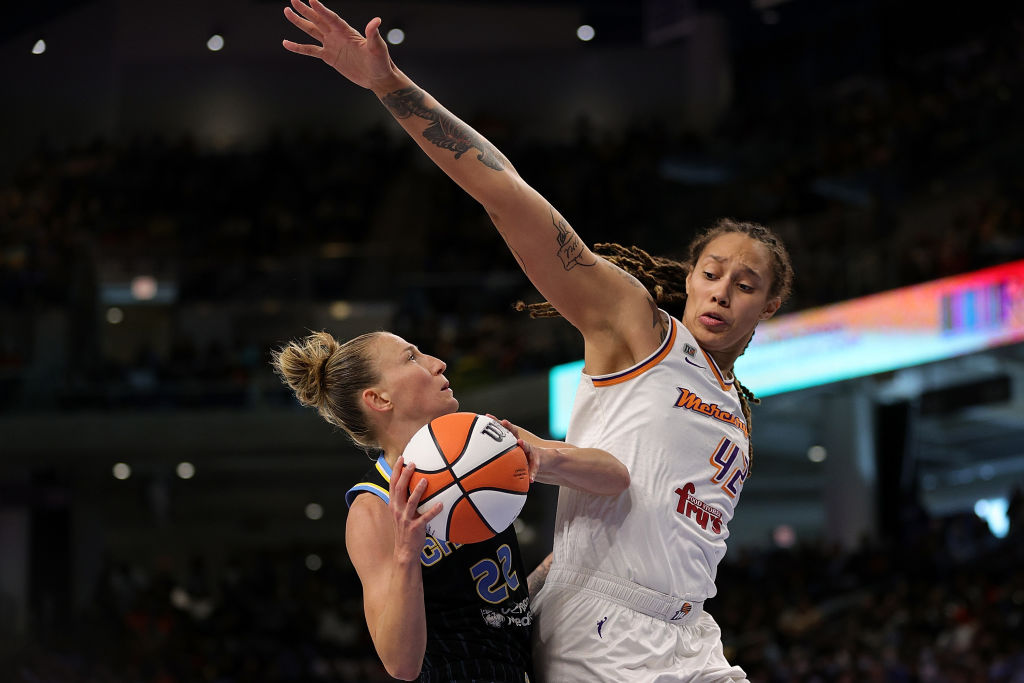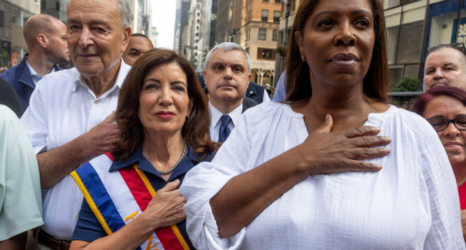WNBA champion Brittney Griner’s detainment in Russia seems to be a political pawn. This could have been wholly avoided if women were paid fairly in sports in the U.S.

WNBA Champion and All-Star Brittney Griner is reportedly detained in Russia until May 19 after Russian Federal Customs Service officials say they found vaping cartridges containing hashish oil in her luggage on February 17.
The 31-year-old U.S. basketball star was in the airport to return to the United States after playing for Russia during the WNBA off-season. Still, her release is not forthcoming, even as the Russian-instigated war in Ukraine remains the world’s biggest news.
Yet, the question remains that if a male NBA player were detained in Russia, would he be free by now?
Former NCAA basketball star Maurice Creek was recently released and allowed to go home from Ukraine after attempting to leave the country before the war with Russia. NBA player Enes Kanter was detained and released in 2017 over a canceled passport.
With the war between Ukraine and Russia, Griner’s detainment seems to be a political pawn as Russia’s government has released little to no updates about her.
This could have been wholly avoided if women were paid fairly in sports in the United States. WNBA players report a need to play overseas during their off-season for additional income. Griner has a maximum base salary of $227,900 in the WNBA, but in Russia, the 6-foot-9 star makes $1 million per season.
Throughout history, women have fought for equity and fair wages in sports. Beliefs and societal rules for women have created many barriers to participating in activities like sports.
Like with men, women begin their sports careers early in high school and college. It wasn’t until 1972 when the Title IX gender equity law passed which opened doors for more opportunities for women to compete. The law has given an “equal shot” for girls’ and women’s dreams and futures under the constitution.
As definitions and conceptions of gender continue to evolve, transgender athletes are looking for opportunities to compete in various sports. NCAA swimmer Lia Thomas recently became the first known trans athlete to win a Division I national championship. Her accomplishments speak for themself, but her success is overshadowed by problematic arguments about her eligibility to compete within the women’s league. This debate will unfortunately but inevitably further complicate arguments about gendered policies in pay moving forward.
Even with national women leagues in various sports existing, the funding for the support has always been an unfortunate situation. Following behind women’s basketball with a large pay gap, women’s golf, tennis and soccer remain at the top of the list for gender pay inequalities. The pay gap with women’s golf has increased over the years. Though women’s tennis and soccer have worked to address the low pay for women, they remain at the the lowest pay level of all sports with the highest disparate gap between their male counterparts.
This past year, both the NBA and WNBA celebrated 75 years and 25 years of existence, respectively, and honored many of the players that have paid the way for the future generation of athletes. The evolution of women’s basketball has been significant since 1892, and still, women’s basketball has one of the widest gender pay gaps.
Seventy-five years ago, the NBA salary was capped at $55,000, but over the years, the league’s salary cap has grown to about $112 million.
Twenty-five years later, the WNBA was able to see their most considerable raised capital of $75 million this year, increasing the amount of money for teams to use for salaries. But this amount came with a struggle; the stipulations, rules and lack of acknowledgment and support intensified the gap and disparities between the women’s and men’s leagues.
While sports and medicine are not the same fields, the barriers to fairness and equity hold true in both professions.
As a woman of color migrating through the medical field and founder of an organization to increase minorities in healthcare, my goal is to encourage other women to emerge, speak out and establish a voice for women to represent and take back the self-confidence and self-respect stolen from them.
The same is true for women in sports.
As millions of viewers around the globe tune in for NCAA men’s and women’s basketball tournaments this month, bias is present in coverage as the men’s games are available on network television and the women’s games are covered by ESPN.
The 2021 ratings for women’s basketball reached 4.1 million viewers, and the TV ratings for the first four men’s basketball games in the tournament reached only a gross average viewership of 3.4 million viewers. The increase in views for women’s basketball has caused ESPN to expand in women’s basketball March Madness production more than ever.
While the world waits for news on the release of Griner, who was detained before the invasion of Ukraine, it is important to note the connection between the gender gap in sports and the disparate treatment of basketball players abroad.
It is only speculation that if Griner were male, she would be home by now. However, it is urgent to make sure she returns to the U.S. safely and hopefully to a fairer sports culture for all.
Up next:





